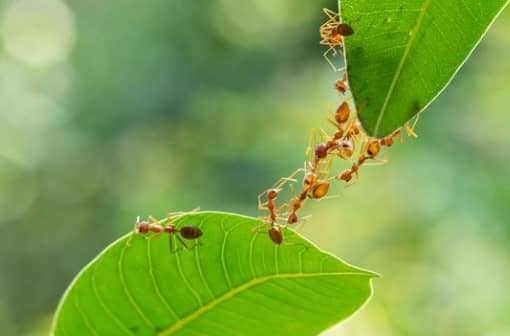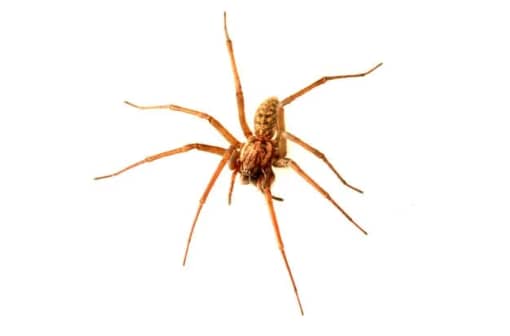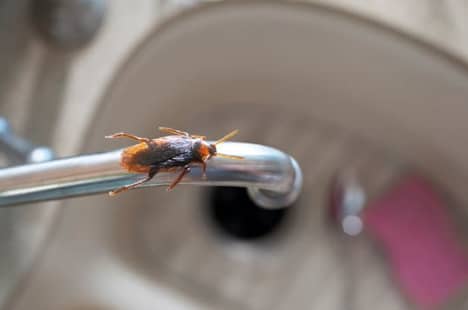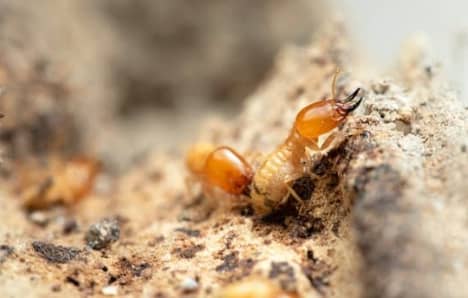Welcome to SR Pest Control, your go-to solution for pest issues right here in Earlville, Cairns! Living with pests like ants, spiders, or rodents can be a real hassle, but fear not – our team at SR Pest Control is here to ensure your home stays pest-free.
Proudly serving the Cairns community, we’re committed to delivering reliable and effective pest control services. From termites to cockroaches, our skilled technicians use cutting-edge tools and techniques to swiftly address your concerns. Bid farewell to pests and welcome a worry-free home with SR Pest Control in Earlville, Cairns!
What our customers in and around Earlville Say About Our Pest Control Services:
Spoke to Kristen regarding a few things pest related. Extremely knowledgeable and friendly. Would recommend this business to others.
– Liam in Earlville
Had a pigeon invasion problem. Stress levels through the roof. Ben & Kristin sorted it – great service, professional & friendly. Highly recommend. A HUGE thank you.
-Suzanne in Manoora
SR Pest Control Cairns provide the best service.
Based on a wide range of knowledge of pests, the most effective and reasonable quarantine service is provided at an appropriate price.
I have used pest control services through several companies, but now I have been trading SR Pest Control Cairns for over 5 years now.
Both the home and the restaurant have always received consistent and satisfactory service.
– Yoojun In Cairns City
Get Your Free Quote Now
Common Pests Found In Earlville, Cairns 4870
At SR Pest Control, we understand the unique challenges homeowners face in this tropical region. Common pests include:

-
Coastal Brown Ant (Pheidole megacephala): These ants are known for leaving large dirt/material piles around entry points often located within wall cavities, skirting boards and brick work.
-
Singapore Ant (Monomorium destructor): These small, reddish-brown ants are adaptable and have been found to favour nesting in electrical components of buildings e.g. switches and circuit boards.
-
Carpenter Ants (Camponotus spp.): While not exclusive to Earlville, carpenter ants can cause damage by chewing through wood to establish their nest, leaving piles of sawdust like timber shavings called frass. Controlling them is crucial to prevent property damage.
-
Black House Ant (Ochetellus glaber): These small, intensely-black coloured ants are attracted to sweet foods and can be a persistent household nuisance.
-
White-Footed House Ant (Technomyrmex albipes): These small, dull and cloudy-black ants, with pale legs and antennae, are predominantly sweet feeding ants and known for trailing around bathrooms and kitchens.
- Ghost Ant (Tapinoma melanocephalum): Recognisable by their dark heads and pale/translucent abdomen and legs, making them look even smaller. Commonly called sugar ants. These ants prefer warmer, wet habitats often seen around sinks, baths, toilets and showers.

-
Redback Spider (Lacrodectus hasselti): Recognised by the distinctive red stripe on the female’s abdomen, redback spiders can be found in dark, sheltered areas, posing a potential threat due to their venom, occasionally seen in Cairns.
-
Brown House Spider (Diaspidae family): Another name is pot belly spider due to the appearance of a large round abdomen; they are commonly treated in houses.
-
Daddy Long Legs Spider (Pholcus phalangioides): Characterised by having very long legs often encountered in houses and subfloors. Apart from their nuisance webs are non-toxic.
-
Huntsman Spider (Sparassidae family): While generally harmless, huntsman spiders can be large and startling. They are beneficial for controlling other pests but might cause anxiety for some residents.
-
Golden Orb-Weaving Spider (Nephila spp.): Known for their intricate webs and vibrant colours, these spiders are generally harmless to humans. However, their large size and webs may be a concern in certain areas.
-
St. Andrew’s Cross Spider (Argiope keyserlingii): Recognisable by their distinctive cross-shaped web, these spiders are common in gardens and outdoor spaces. They are generally harmless.
-
Wolf Spider (Lycosidae family): With a diverse range of species, wolf spiders are often found in gardens and grassy areas. While not typically dangerous, some species can deliver a mild bite.
-
White-Tailed Spider (Lampona spp.): Identified by a white spot at the tip of their abdomen, white-tailed spiders can be found indoors. While their bites can cause discomfort, severe reactions are rare.
Cockroaches

-
Australian Cockroach (Periplaneta australasiae): These large cockroaches are common in and around homes, especially in outdoor areas. They are attracted to light and can fly short distances.
-
German Cockroach (Blattella germanica): A small species that often infests kitchens and food storage areas, the German cockroach is known for its rapid reproduction and adaptability.
-
Brown Banded Cockroach (Supella longipalpa): Are challenging to eradicate due to the areas they harbour in. These cockroaches commonly like to live in appliances. Often seen at night time foraging for food on benches. They breed rapidly and will live in most areas of the building once established.
-
American Cockroach (Periplaneta americana): One of the largest cockroach species, the American cockroach is attracted to damp and dark areas. They can be found in subfloors, drains, septics and other humid environments.
-
Oriental Cockroach (Blatta orientalis): Commonly found in damp and cool areas, Oriental cockroaches are known for their dark and shiny appearance. They often infest crawl spaces and drainage systems.
-
Smokybrown Cockroach (Periplaneta fuliginosa): These cockroaches prefer outdoor habitats but can enter homes seeking shelter. They are attracted to lights and can be found in tree bark, mulch, and similar environments.

-
Subterranean Termites (Coptotermes spp.): This is a common and destructive termite species in Australia, including Earlville. They build nests underground and can access structures through mud tubes.
-
Drywood Termites (Cryptotermes spp.): These termites infest dry wood and are more commonly found in older timber homes. They don’t require contact with the soil to survive.
-
Dampwood Termites (Porotermes spp.): Typically found in damp or decaying wood, dampwood termites are less common in urban areas but may be present in certain environments where timber-soil contact.
-
Cone Head Termites (Nasutitermes spp.): Identified by their distinctive pointed heads, these termites are known for building arboreal nests in Earlville and other forested areas. They primarily feed on decaying plant material.
Pest controllers in Earlville, Queensland, encounter a diverse range of pests, including various ant species such as Coastal Brown Ant and Ghost Ant. Common spiders like the Daddy Long Leg Spider and Huntsman Spider may be present, with pest control strategies ensuring residents’ safety. Termites, including the destructive Subterranean species, pose threats to structures, emphasising the importance of prompt intervention. Cockroach infestations, featuring species like the German and American Cockroach, are effectively managed through targeted control measures. Pest control professionals in Earlville are adept at identifying and addressing these pests, employing tailored strategies to safeguard homes from potential damage and health risks. Regular inspections and proactive measures are integral to maintaining a pest-free living environment in the region.
Our experienced team is well-versed in identifying and addressing these pest issues promptly. SR Pest Control can help safeguard your home, ensuring a comfortable and pest-free living environment in Earlville, Cairns.
